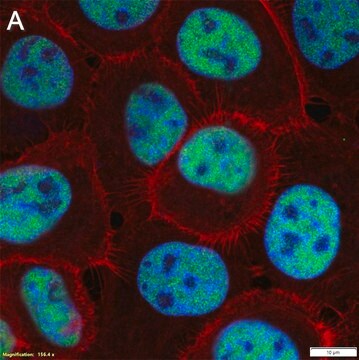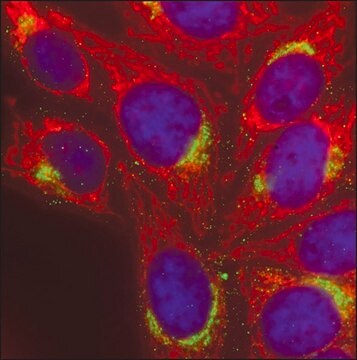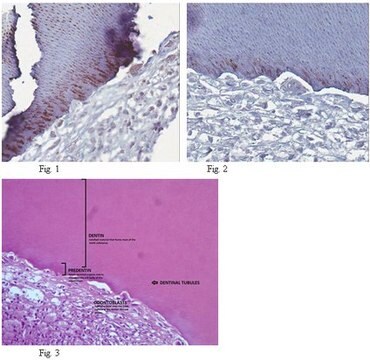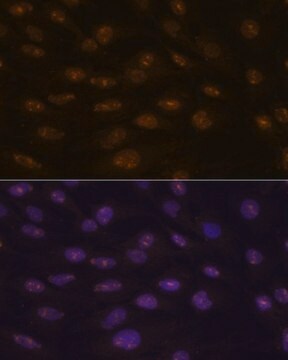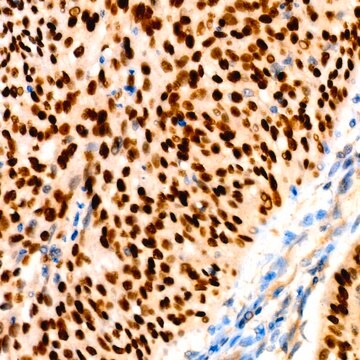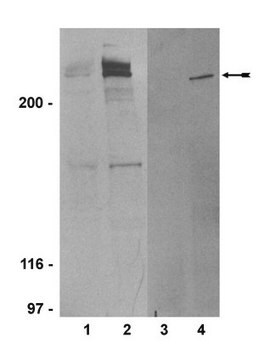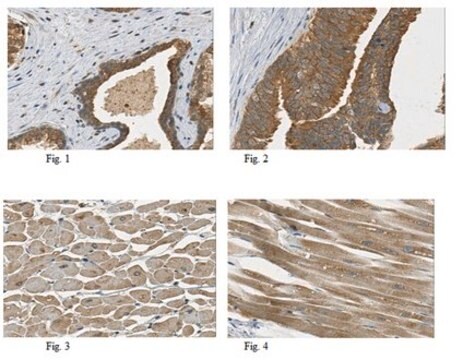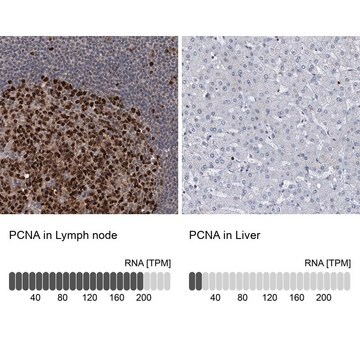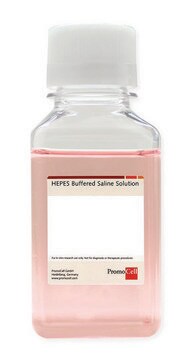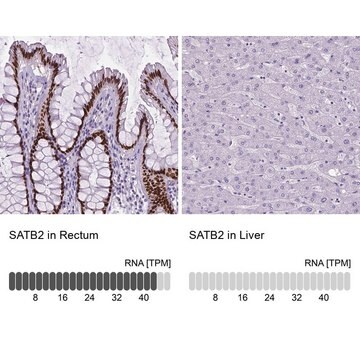MABS519-AF647
Anti-P40 Antibody, clone 11F12.1, Alexa Fluor™ 647
clone 11F12.1, from mouse, ALEXA FLUOR™ 647
Synonym(s):
Tumor protein 63, p63, Chronic ulcerative stomatitis protein, CUSP, Keratinocyte transcription factor KET, Transformation-related protein 63, TP63, Tumor protein p73-like, p73L, p40, p51, P40
About This Item
Recommended Products
biological source
mouse
Quality Level
conjugate
ALEXA FLUOR™ 647
antibody form
purified antibody
antibody product type
primary antibodies
clone
11F12.1, monoclonal
species reactivity
mouse, human
technique(s)
immunocytochemistry: suitable
NCBI accession no.
UniProt accession no.
shipped in
wet ice
target post-translational modification
unmodified
Gene Information
human ... TP63(8626)
General description
Specificity
Immunogen
Application
The unconjugated version (Cat. No. MABS519) has been shown to work in WB, IH(P).
Signaling
Signaling Neuroscience
Quality
Immunocytochemistry Analysis: A 1:100 dilution of this antibody detected P40 in NIH/3T3 cells.
Target description
Physical form
Storage and Stability
Other Notes
Legal Information
Disclaimer
Not finding the right product?
Try our Product Selector Tool.
Storage Class Code
10 - Combustible liquids
WGK
WGK 2
Flash Point(F)
Not applicable
Flash Point(C)
Not applicable
Certificates of Analysis (COA)
Search for Certificates of Analysis (COA) by entering the products Lot/Batch Number. Lot and Batch Numbers can be found on a product’s label following the words ‘Lot’ or ‘Batch’.
Already Own This Product?
Find documentation for the products that you have recently purchased in the Document Library.
Our team of scientists has experience in all areas of research including Life Science, Material Science, Chemical Synthesis, Chromatography, Analytical and many others.
Contact Technical Service